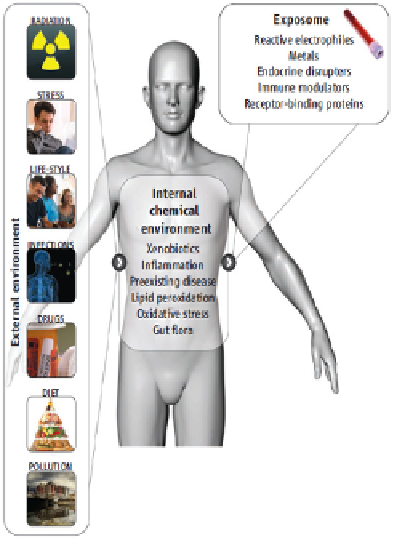Geoscience Reference
In-Depth Information
FIGURE 3-2
Characterizing the exposome. The exposome represents the combined ex-
posures from all sources that reach the internal chemical environment. Examples of toxi-
cologically important exposome classes are shown. Biomarkers, such as those measured
in blood and urine, can be used to characterize the exposome. Source: Adapted from
Rappaport and Smith 2010.
sure Biology Program; the National Science Foundation Environmental, Health,
and Safety Risks of Nanomaterials Program; and the European Commission's
exposome initiative. Those organizations provide valuable partnership opportu-
nities for EPA to build capacity through strategic collaborations. Moreover, an
integral need for EPA in the future will be to develop processes and procedures
for effective public communication of the potential public health and environ-
mental risks associated with the increasing number of chemicals, both old and
new, that will undoubtedly be identified in food, water, air, and biologic sam-
ples, including human tissues. Risk communication strategies should include the
latest approaches in social, economic, and behavioral sciences, as discussed in
Chapter 5.
Applications of Biomarkers to Human Health Studies
Epidemiologic research plays a central role in assessing, understanding,
and controlling the human health effects of environmental exposures. In 2009,


Search WWH ::

Custom Search